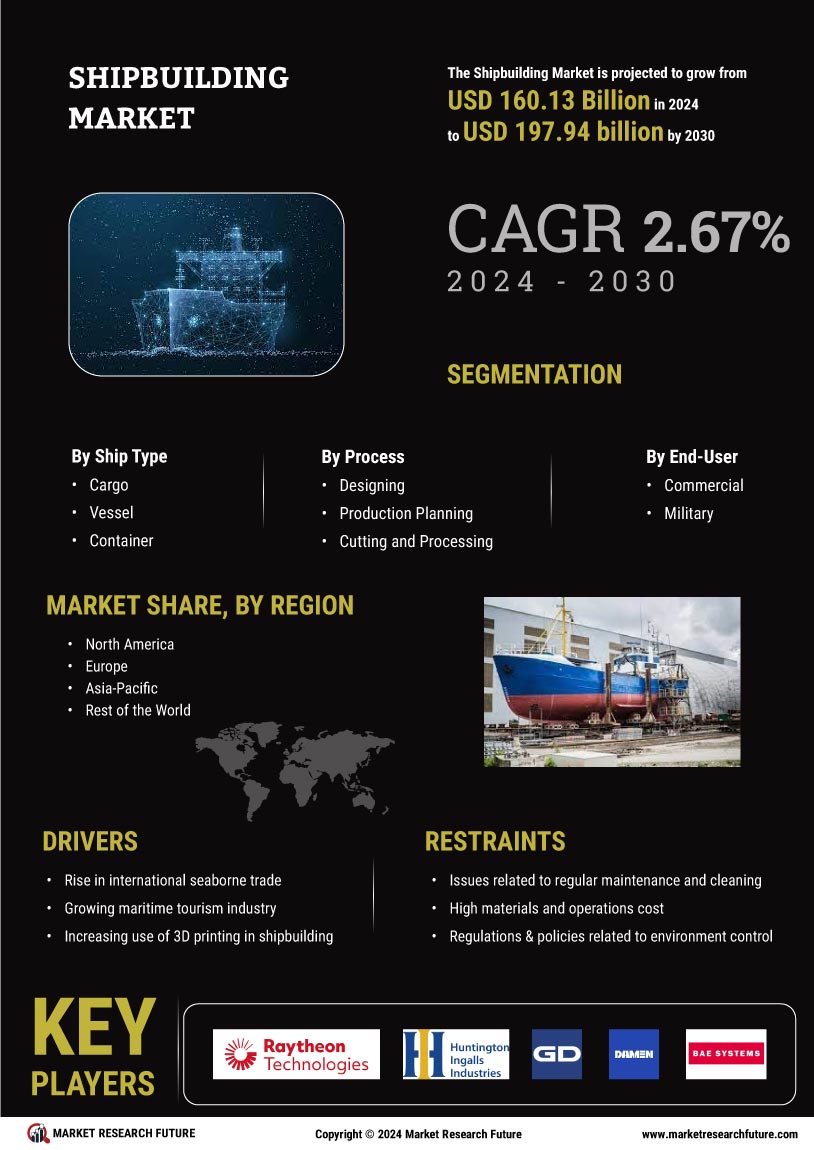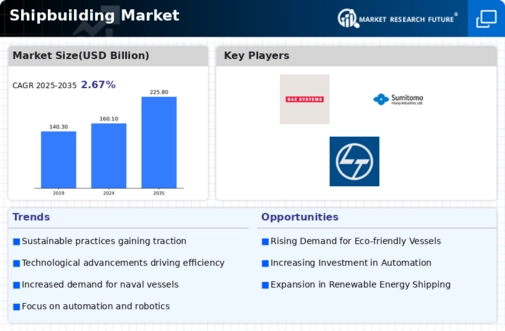Market Growth Projections
The Global Shipbuilding Industry is poised for substantial growth in the coming years. Projections indicate that the market will expand from 160.1 USD Billion in 2024 to 225.8 USD Billion by 2035, reflecting a robust CAGR of 3.17% from 2025 to 2035. This growth trajectory is influenced by various factors, including increasing global trade, technological advancements, and government investments in maritime infrastructure. The demand for eco-friendly and defense vessels further supports this positive outlook, suggesting a dynamic and evolving market landscape.
Increasing Demand for Eco-Friendly Vessels
The Global Shipbuilding Industry experiences a notable shift towards the construction of eco-friendly vessels. This trend is driven by stringent environmental regulations and a growing emphasis on sustainability. Shipbuilders are increasingly adopting technologies such as LNG propulsion and hybrid systems to reduce emissions. For instance, the International Maritime Organization has set ambitious targets for reducing greenhouse gas emissions from shipping. As a result, the demand for eco-friendly vessels is projected to rise, contributing to the overall market growth, which is expected to reach 160.1 USD Billion in 2024.
Technological Advancements in Shipbuilding
Technological advancements play a crucial role in shaping the Global Shipbuilding Market. Innovations such as automation, digital twin technology, and advanced materials are enhancing efficiency and reducing costs in shipbuilding processes. For example, the use of robotics in ship assembly has streamlined production timelines and improved precision. Additionally, the integration of digital tools allows for better design and simulation, leading to optimized vessel performance. These advancements are likely to attract investments and drive market growth, with projections indicating a market size of 225.8 USD Billion by 2035.
Rising Global Trade and Maritime Activities
The Global Shipbuilding Market is significantly influenced by the rising global trade and maritime activities. As economies recover and expand, the demand for shipping services increases, necessitating the construction of new vessels. The World Trade Organization reports a steady increase in global merchandise trade, which directly correlates with the need for new ships. Furthermore, the expansion of shipping routes and the development of ports enhance maritime logistics, further driving demand for shipbuilding. This trend is expected to sustain the market's growth trajectory, with a projected CAGR of 3.17% from 2025 to 2035.
Growing Demand for Defense and Naval Vessels
The Global Shipbuilding Market is witnessing a surge in demand for defense and naval vessels. Geopolitical tensions and the need for enhanced maritime security are prompting nations to invest in their naval capabilities. Countries are increasingly commissioning advanced warships, submarines, and support vessels to bolster their defense strategies. This trend is particularly evident in regions with rising security concerns, leading to increased budgets for naval procurement. As a result, the shipbuilding industry is likely to see a sustained demand for military vessels, contributing to overall market growth.
Government Investments in Maritime Infrastructure
Government investments in maritime infrastructure are pivotal for the Global Shipbuilding Industry. Many nations are recognizing the strategic importance of a robust maritime sector and are allocating funds to enhance shipbuilding capabilities. For instance, countries like South Korea and China are investing heavily in their shipyards to maintain competitiveness. These investments not only improve shipbuilding facilities but also foster innovation and job creation within the sector. As governments prioritize maritime infrastructure, the shipbuilding market is likely to benefit from increased production capacity and technological advancements.














Leave a Comment